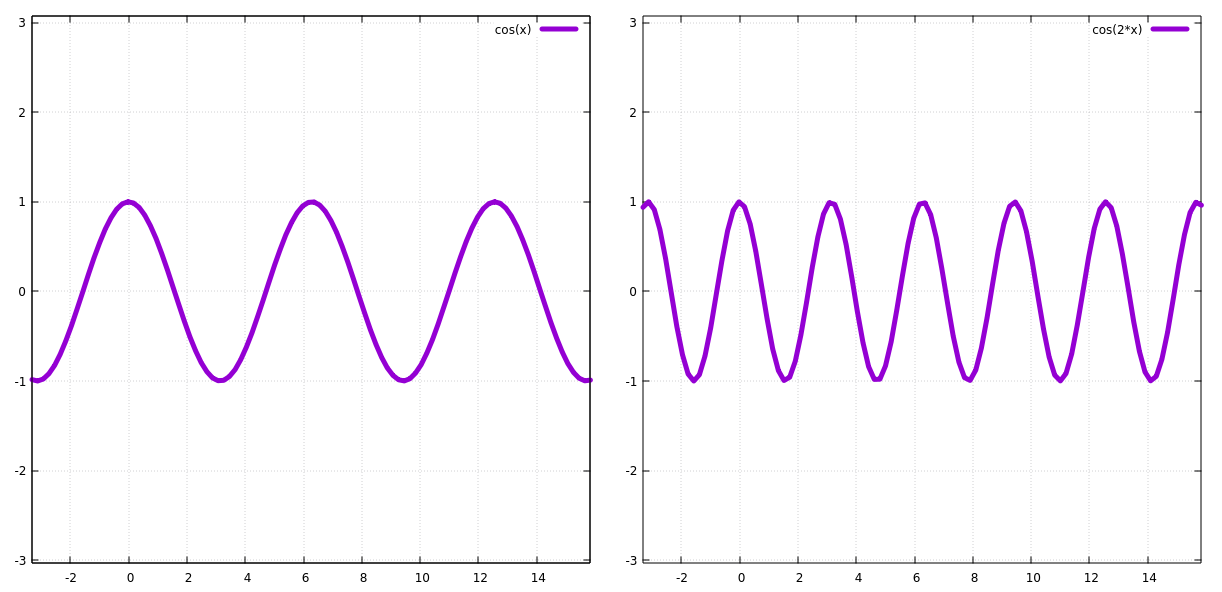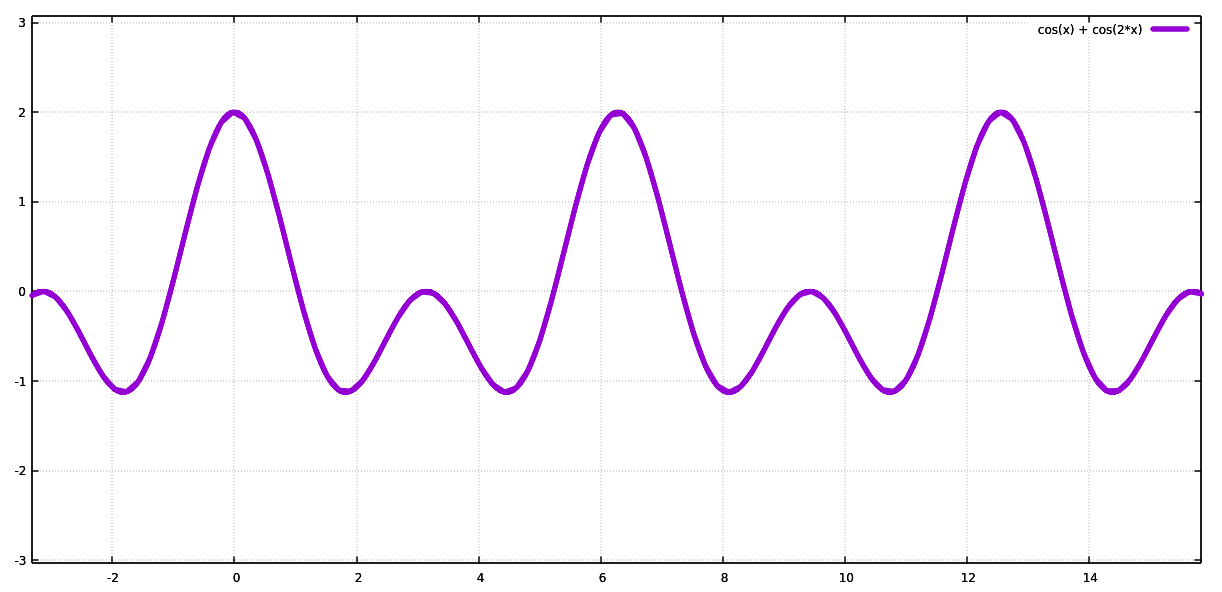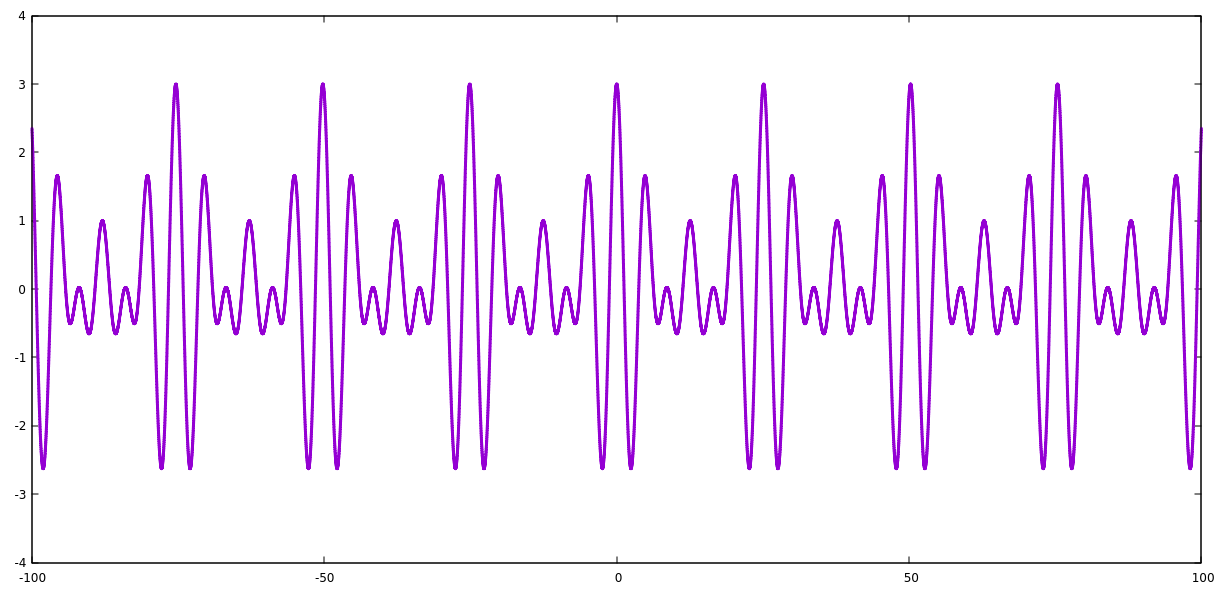Welcome to the first post of the Build a Synthesizer series! In this post we’re going to talk about the basics of what sound is, how you hear it, and how to make it.
What is Sound?
Sound is a funny thing. To simplify, inside each of our ears there is a small thin sheet of skin called your ear drum. When air gets pushed into or out of your ear, it pushes or pulls on the thin sheet. If the sheet gets pushed in and out fast enough, your brain interprets that as sound and you hear it. If the sheet moves in and out 440 times per second you’ll hear an A! 880 times per second? Still an A, but this time an octave higher than before. If it’s moving less than 12 times per second, or more than around 28,000, your brain doesn’t turn that into sound for you and you won’t hear anything.
Imagine that the following drawing shows how far pushed or pulled the sheet is over time. -1 would indicate it’s pulled all the way out, and 1 indicates it’s pushed all the way in. You can see that in this drawing it’s going from all the way out to all the way in, over and over again. How quickly it goes back and forth determines what note you hear. If you’ve ever come across the term “frequency” of a note, this is what that is. It’s how frequent your ear drum is moving back and forth. Simple!

Now here’s where your brain gets even more impressive. Most people have at most two ears, and yet how many notes can you hear? Tons! Way more than you have ears for sure. What’s going on here?
Let’s take the following two patterns of ear drum movement, and we’ll say the first one is going in and out 300 times per second and the second one is going twice as fast at 600 times per second.

If your ear drum were moving in and out 300 times per second, you’d hear the following:
If your ear drum were moving in and out 600 times per second, you’d hear this instead:
Now, what about if your ear drum were moving in this funky pattern:

What do you think you’d hear? Click to find out:
It sounds like both of the previous sounds, just at the same time! And that’s just what it is. That drawing shows the 300 times per second pattern added to the 600 times per second pattern. Your brain is able to take your ear drum wiggling around in that funky pattern and realize that it’s actually two separate patterns joined together. With that information, it has you hear two different notes at the same time. No matter how crazy the pattern gets, your brain will convert that ear drum pattern into you hearing two separate notes.
This isn’t to say that your brain can only hear two notes at once. When you hear a major chord which is comprised of a three notes, here’s the in-and-out dance your ear drum is doing:

Creating Sound
At this point, we know that to get our brains to hear any series of notes we want, all that needs to happen is our ear drums need to wiggle back and forth in the right pattern. Fortunately, this is quite easy to do. We can take an object and move it back and forth in the pattern we want, and in doing so that will move the air around it in a similar pattern. That air eventually makes its way to one of our ear drums and sets it wiggling in the same pattern.
If you look at slow motion video of a speaker, this is exactly what’s happening. The round part of the speaker is moving in and out in a certain pattern, which sets the air moving in that pattern, which sets our ear drum moving in that pattern, and kaboom we hear sound!
Summary
We’ve discussed what sound is (your brain interpting your ear drum moving back and forth), the incredible work your brain does to separate movement patterns of your ear drum back into distinct notes, and how we can use objects like speakers to create any sounds we want just by moving them around.
Up next, we’ll talk about digital sound. That is, how do we represent and play sound on a digital system.